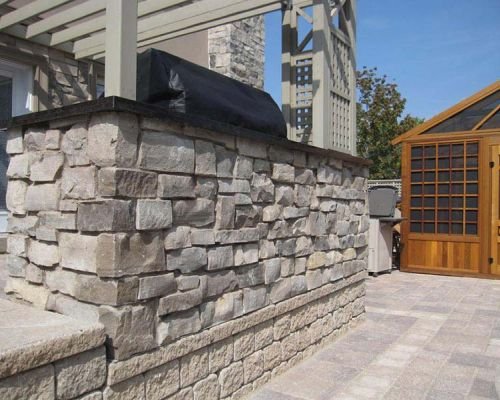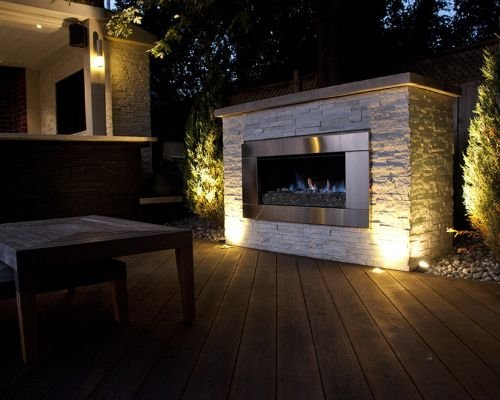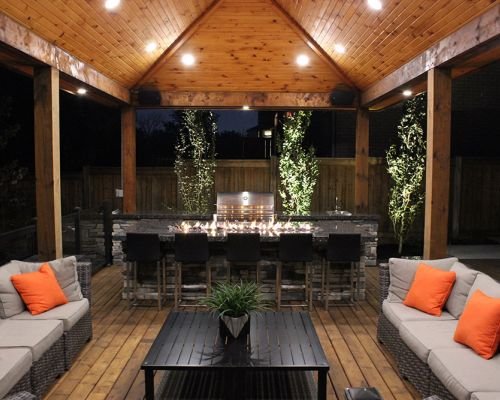Transforming Toronto yards into beautiful, sustainable retreats is both an art and a science—one that balances aesthetics, eco-responsibility, and client satisfaction. Can harmony truly be achieved where native plants support local ecosystems, water management techniques reduce runoff, and eco-friendly materials create resilient landscapes? This guide explores how thoughtful design, innovative features, and expert collaboration turn outdoor spaces into personal sanctuaries that withstand Toronto’s seasonal challenges. From vibrant gardens to minimalist retreats, every element is crafted with sustainability in mind, incorporating rain gardens, permeable pavements, and energy-efficient lighting. The approach emphasizes long-term beauty, low maintenance, and ecological health, prompting the question: how can homeowners embrace these strategies to craft outdoor spaces that are as responsible as they are inspiring? As trends evolve, future landscapes will be adaptable, resilient, and rooted in environmentally conscious practices—transforming yards not just into retreats, but into lasting legacies of harmony with nature.
Transform Your Toronto Outdoor Space with Expert Landscape Design
Discover how Toronto Landscape & Design (TLD) can elevate your outdoor living experience with their comprehensive landscape solutions. Our award-winning designers take everything into consideration, delivering stunning natural stone features, water gardens, irrigation systems, and retaining walls that beautifully complement your Toronto property. Whether you’re dreaming of a backyard makeover or a complete landscape overhaul, TLD is dedicated to creating personalized, breathtaking outdoor environments. Reach out today at mike@torontolandscapedesign.com or call 1.416.644.0499 to start transforming your outdoor space into a masterpiece.

Transforming Toronto Yards into Personal Sanctuaries
Transforming a Toronto yard into an inviting outdoor retreat goes beyond planting a few flowers or adding a patio. It’s about carefully balancing beauty, functionality, and sustainability to create a space that truly feels like a personal sanctuary. Toronto’s unique climate—with cold winters, warm summers, and moderate rainfall—adds both challenges and opportunities for landscape design. The goal is to craft an environment that’s resilient, eco-friendly, and tailored to the homeowner’s lifestyle, whether that means a quiet corner for relaxation or a lively area for entertaining.
Achieving this balance requires thoughtful planning. Native plants like oak, maple, and birch are excellent choices because they thrive locally with minimal maintenance, supporting the surrounding ecosystem. Incorporating these species helps ensure the landscape is not only attractive but also sustainable over time. Thoughtful feature placement—such as rain gardens, permeable pavements, and eco-friendly materials—reduces runoff, conserves water, and promotes ecological health, all while adding visual appeal. The challenge is seamlessly integrating these elements to create a cohesive, inviting outdoor space.
Designing a Toronto yard as a retreat also means listening closely to the homeowner’s vision. Some prefer lush, vibrant gardens; others want minimalist, low-maintenance setups. By translating these preferences into eco-conscious choices, the final landscape reflects both personality and environmental values. Educating clients about native plants and water-saving techniques fosters a sense of shared ownership, encouraging ongoing care and pride in the space. When design and installation work hand in hand, the result is a landscape that’s both beautiful and enduring.
Creating a successful outdoor retreat hinges on understanding local conditions and embracing sustainable practices. The right mix of native plants, eco-friendly materials, and water management techniques ensures the landscape remains resilient through changing seasons. This approach not only enhances the property’s aesthetic but also minimizes environmental impact, making the yard a true extension of nature. The process demands creativity, technical knowledge, and a clear focus on long-term harmony between the built environment and the natural world.
Ultimately, transforming Toronto yards into sustainable retreats is about more than aesthetics. It’s about designing spaces that nurture well-being, support local ecosystems, and stand the test of time. When executed thoughtfully, these landscapes become personal sanctuaries—beautiful, eco-friendly, and perfectly suited to the city’s climate. They invite homeowners to enjoy the outdoors confidently, knowing their yard is a responsible reflection of their values and a lasting gift to the environment.
Core Principles for Sustainable, Beautiful Landscaping
Creating a beautiful and sustainable landscape begins with strong design principles that prioritize both visual appeal and environmental responsibility. Native plants are the cornerstone of this approach because they are naturally adapted to Toronto’s climate, thriving with minimal water, fertilizers, and pesticides. Using these species not only makes the landscape more resilient but also supports local ecosystems by providing habitat and food for wildlife, creating a vibrant, self-sustaining yard.
Water management is a fundamental element. Techniques like rain gardens, permeable pavements, and drip irrigation help conserve water and reduce runoff, protecting the environment and ensuring the landscape’s long-term health. Durable, eco-friendly materials for pathways, decks, and features—such as recycled stone or sustainably sourced wood—not only extend the lifespan of outdoor elements but also minimize ecological impact, reinforcing the sustainability of the design.
Biodiversity plays a crucial role. Incorporating a variety of plants and creating habitats within the yard attract beneficial insects, pollinators, and local wildlife. This diversity enriches the visual texture and color, making the landscape more lively and dynamic. A varied plant palette also reduces reliance on chemical interventions and ongoing maintenance, fostering a resilient ecosystem that requires less input over time.
Design for functionality complements aesthetic goals. Proper zoning—allocating specific areas for relaxation, vegetable gardening, or play—makes the yard more organized and user-friendly. Thoughtful placement of focal points like water features or fire pits enhances visual interest and invites social gatherings. Well-planned pathways and lighting guide movement safely and add ambiance, creating an inviting atmosphere for both day and night.
Eco-friendly materials and practices should be seamlessly integrated. Reclaimed stone, recycled wood, and sustainable composites not only support environmental goals but also add unique character to the landscape. Green walls and vertical gardens maximize space, improve air quality, and support biodiversity, transforming even small yards into lush, vibrant retreats that serve multiple functions.
Simplicity and long-term thinking underpin successful landscape design. Native plants and durable materials reduce the need for frequent replacements and intensive care, making the yard easier to maintain and more resistant to weather fluctuations. A thoughtfully planned landscape remains vibrant and inviting year after year, with less effort and a lower environmental footprint, aligning with homeowners’ practical needs and values.

Innovative Features Elevating Outdoor Retreats
Innovative features can elevate a Toronto backyard from simple to spectacular, blending creativity with eco-consciousness. Thoughtfully designed lighting, such as energy-efficient LED fixtures or charming string lights, adds warmth and ambiance for evening gatherings without increasing energy costs. Water features like rain gardens or eco-friendly fountains serve as stunning focal points that support local water cycles and reduce runoff, making them both visually appealing and environmentally responsible choices. Outdoor structures such as pergolas, green walls, or sustainable decks create functional spaces that invite relaxation and socializing, built from recycled or sustainably sourced materials to ensure durability and eco-friendliness.
Designing these features with sustainability in mind enhances their style and practicality. Reclaimed stone, recycled wood, and eco-friendly composite materials can be integrated seamlessly into the landscape, adding visual interest while minimizing ecological impact. For example, a pergola crafted from recycled metal or a deck built from sustainably harvested timber can stand out as a statement piece that reflects eco-conscious values. Green walls or vertical gardens not only boost aesthetic appeal but also improve air quality and support biodiversity, transforming even small yards into lush, vibrant retreats.
Incorporating homeowners’ preferences is key to creating these innovative elements. Whether someone envisions a colorful garden, a sleek modern patio, or a cozy fire pit area, translating those ideas into eco-friendly solutions makes the design both inspiring and functional. For instance, a client who loves entertaining might appreciate a sustainable deck paired with native plantings and energy-efficient lighting to create an inviting atmosphere. When clients see how features like solar-powered lights or rainwater harvesting can enhance their lifestyle, they’re more likely to embrace sustainable choices.
Adding these creative touches doesn’t have to be complicated or costly. Small upgrades like solar pathway lights or rainwater collection systems can make a significant impact on both function and style. These features serve as focal points and conversation starters, giving the yard personality and charm that last. They demonstrate that eco-friendly design can be accessible, stylish, and practical, encouraging more homeowners to incorporate sustainable practices into their outdoor spaces.
Seamlessly integrating innovative features with eco-conscious materials and practices transforms outdoor areas into personal sanctuaries. These elements reflect the homeowner’s personality and values, creating spaces that are inviting, resilient, and uniquely tailored. When well-designed, these features promote a healthier environment and foster a sense of pride and ownership, ensuring the yard remains a vibrant, inspiring retreat for years to come.
This approach also paves the way for future upgrades. Modular outdoor structures, multi-use zones, and permaculture-inspired layouts allow homeowners to adapt their landscapes over time. Using eco-friendly materials and energy-efficient systems now sets the foundation for landscapes that are easy to care for and expand, supporting long-term sustainability. Incorporating creative features with a focus on environmental responsibility results in outdoor spaces that are not just beautiful but also resilient and adaptable, making every backyard a true extension of nature’s harmony.
Expert Strategies for Successful, Eco-Friendly Yard Designs
Professional landscape designers emphasize that successful yard transformations in Toronto hinge on striking a balance between aesthetic appeal and sustainability. Native plants are foundational because they are naturally adapted to local conditions, thriving with minimal water, fertilizers, and pesticides. Choosing these species not only reduces maintenance but also supports local ecosystems by providing habitat and food for wildlife, leading to more resilient and vibrant landscapes.
Clear communication and detailed planning are crucial throughout every phase. Experienced professionals stress involving clients early, listening closely to their desires, and setting realistic expectations. This collaborative approach ensures the final design aligns with both the homeowner’s lifestyle and eco-conscious goals. Transparency during installation fosters trust and helps prevent misunderstandings, making the process smoother and more enjoyable.
Incorporating innovative features is another key element. Eco-friendly lighting, rain gardens, and sustainable materials don’t just add visual interest—they serve broader environmental purposes. Energy-efficient LED fixtures, solar-powered path lights, and permeable pavements demonstrate that eco-conscious choices can enhance beauty and functionality simultaneously. These details elevate the landscape’s overall quality and set a high standard for responsible design.
Designers also highlight the importance of ongoing maintenance and adaptability. Landscapes are dynamic, requiring regular care like pruning, soil health checks, and watering adjustments to stay healthy. Planning for flexibility allows homeowners to update their landscapes over time, ensuring resilience against weather variations and evolving needs. This proactive mindset extends the lifespan of the landscape while maintaining its ecological and aesthetic integrity.
Understanding local conditions and the client’s unique needs is essential. Successful projects combine native plantings, water conservation, eco-friendly materials, and innovative features into a cohesive whole. When these elements work together seamlessly, they produce outdoor spaces that are not only stunning but also sustainable. This holistic approach results in landscapes that reflect the homeowner’s values while nurturing Toronto’s natural environment.
Professional insights underscore that achieving this harmony requires expertise, creativity, and a keen eye for detail. Regular communication, transparent processes, and respect for the local landscape foster trust and satisfaction. When clients see their vision brought to life with sustainable practices, they gain pride and confidence in their outdoor spaces.
Finally, the best landscapes are those designed with a long-term perspective. Incorporating durable, eco-friendly materials and water-saving techniques ensures the yard remains vibrant with less effort over time. These practices create a resilient, environmentally responsible retreat that continues to inspire and serve the homeowner for years to come. The result is a yard that marries beauty, function, and sustainability—truly a reflection of thoughtful, expert craftsmanship.

Paving the Way for Future-Ready, Resilient Landscapes
Looking ahead, transforming Toronto yards into stunning outdoor retreats will increasingly rely on innovative, eco-friendly practices that balance beauty with sustainability. Technologies like smart irrigation systems, solar-powered lighting, and water harvesting tools are making it easier for homeowners to maintain vibrant, resilient landscapes with less effort and environmental impact. These advancements not only enhance the visual appeal but also support long-term ecological health, ensuring outdoor spaces remain both beautiful and functional over time.
Design trends are moving toward adaptable and flexible solutions. Modular structures, multi-use zones, and permaculture-inspired layouts allow homeowners to personalize and evolve their outdoor retreats as needs change. This approach encourages viewing yards as dynamic environments rather than fixed features, promoting long-term usability and ecological resilience. Landscape professionals will need to stay current with these innovations to deliver designs that are relevant, sustainable, and future-proof.
The use of eco-friendly materials will continue to grow in importance. Recycled, biodegradable, and sustainably sourced products are becoming more accessible, making responsible choices easier and more affordable for homeowners. These materials add character and durability while reducing ecological footprints, aligning with the increasing demand for sustainable living. As awareness about environmental issues spreads, the industry will see a broader shift toward greener, more responsible landscape practices.
Water management will remain a core focus, especially as climate change influences rainfall patterns and stormwater challenges increase. Techniques like rain gardens, permeable pavements, and integrated water systems will be essential for creating landscapes that are both resilient and visually appealing. Future projects will likely blend these water solutions seamlessly with aesthetic elements, supporting ecological balance and resource conservation.
Homeowners’ desire for wellness-oriented outdoor spaces will shape future landscape design. Creating restorative environments that promote relaxation, clean air, and mental well-being will become more prevalent. Features such as green walls, native plant gardens, and meditation zones will combine beauty with function, encouraging a deeper connection to nature. Balancing these wellness priorities with sustainable practices will be key to crafting outdoor retreats that nurture both mind and environment.